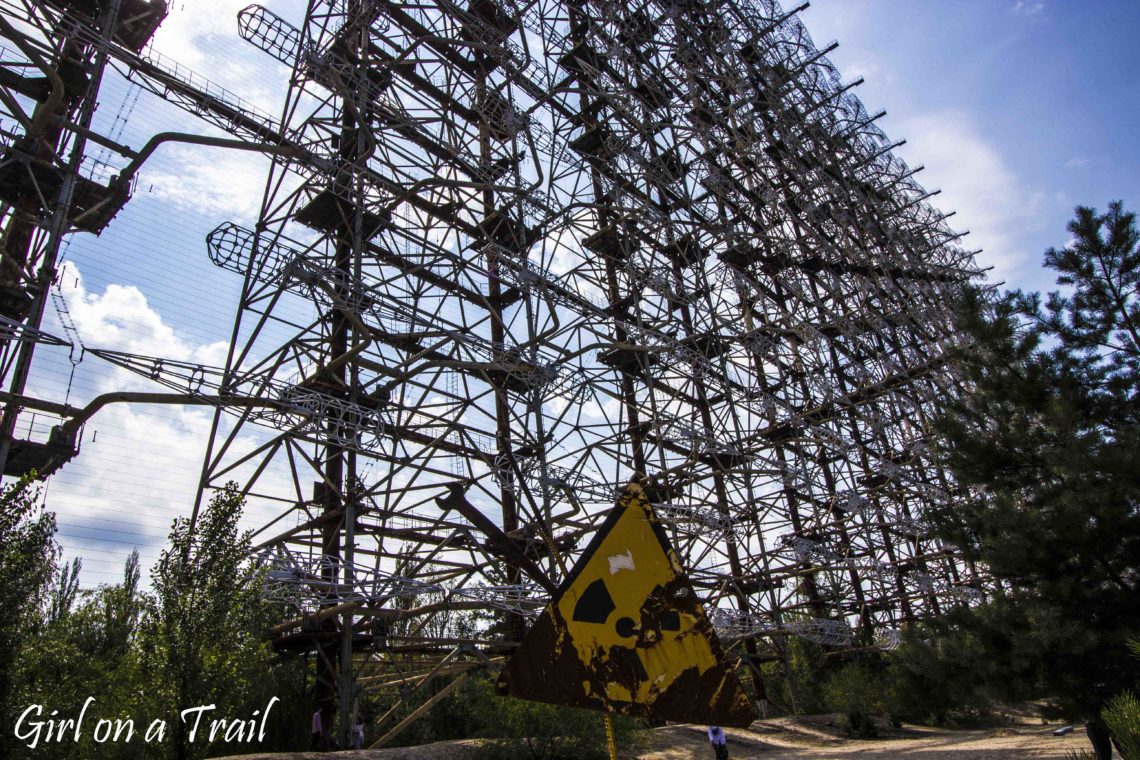
Russian Woodpecker – Duga in Chernobyl Exlusion Zone, Girl off the Trail
Russian Woodpecker (Duga) was my first point during exploration in Chernobyl, although I must admit that I would prefer it to be the last – such a cherry on the cake of the Chernobyl Exclusion Zone. I won’t hide that I went to Chernobyl, mainly to see the famous Moscow’s Eye not the site of the nuclear power plant disaster.

Moscow’s Eye is the colloquial name given to the Soviet over-the-horizon radar system, which in the USSR was called Duga, or “bow”. The system consisted of three radars with a range of 3,000 km. Radars were transmitting and receiving devices that used the reflection of short radio waves from the ionosphere. It can be said that during the Cold War, they constituted the pinnacle of Soviet technology. Their task was the early detection of fired ballistic missiles with nuclear warheads. They were able to do it surprisingly quickly, just within 3 minutes after launching. For this reason, they have been aptly called the Moscow’s Eye.

Each of the radars operated in a different frequency range and covered a different area of the globe. The radar in Chernobyl covered the most strategic area – the north-eastern part of the USA together with the North Pole, the radar in Nikolaev on the Black Sea – Asia, and in Komsomolsk on Amur – the west coast of the USA together with Alaska.

The Duga makes a really great impression, mainly due to the scale of this structure. The facility is 150 m high and 700 m long. The whole complex, including the radar and the technical infrastructure, was kept secret. The radar is only 10 km from the nuclear power plant, but its location in the middle of the forest makes it invisible. A self-sufficient town was created for the staff, protected by the military.

The location may have been perfect, but the radar’s existence was betrayed by the way it operated. When transmitting signals, Moscow’s Eye made a characteristic sound resembling a woodpecker knocking on a tree. For this reason, Duga is called Russian Woodpecker in English. The sound emitted by the radar was intense enough to interfere with radio and television broadcasts.

Over the years, many conspiracy theories have arisen around Duga. There were voices that it’s used to control people’s minds or shape the weather. Chernobyl Russian Woodpecker was shut down in April 1986, due to the Chernobyl disaster, it was feared that the increased radiation would destroy the radar. Ultimately, the radar was shut down in 1988. However, Chernobyl disaster wasn’t the only reason why Duga was shut down, modern satellite technologies proved to be much more effective.





